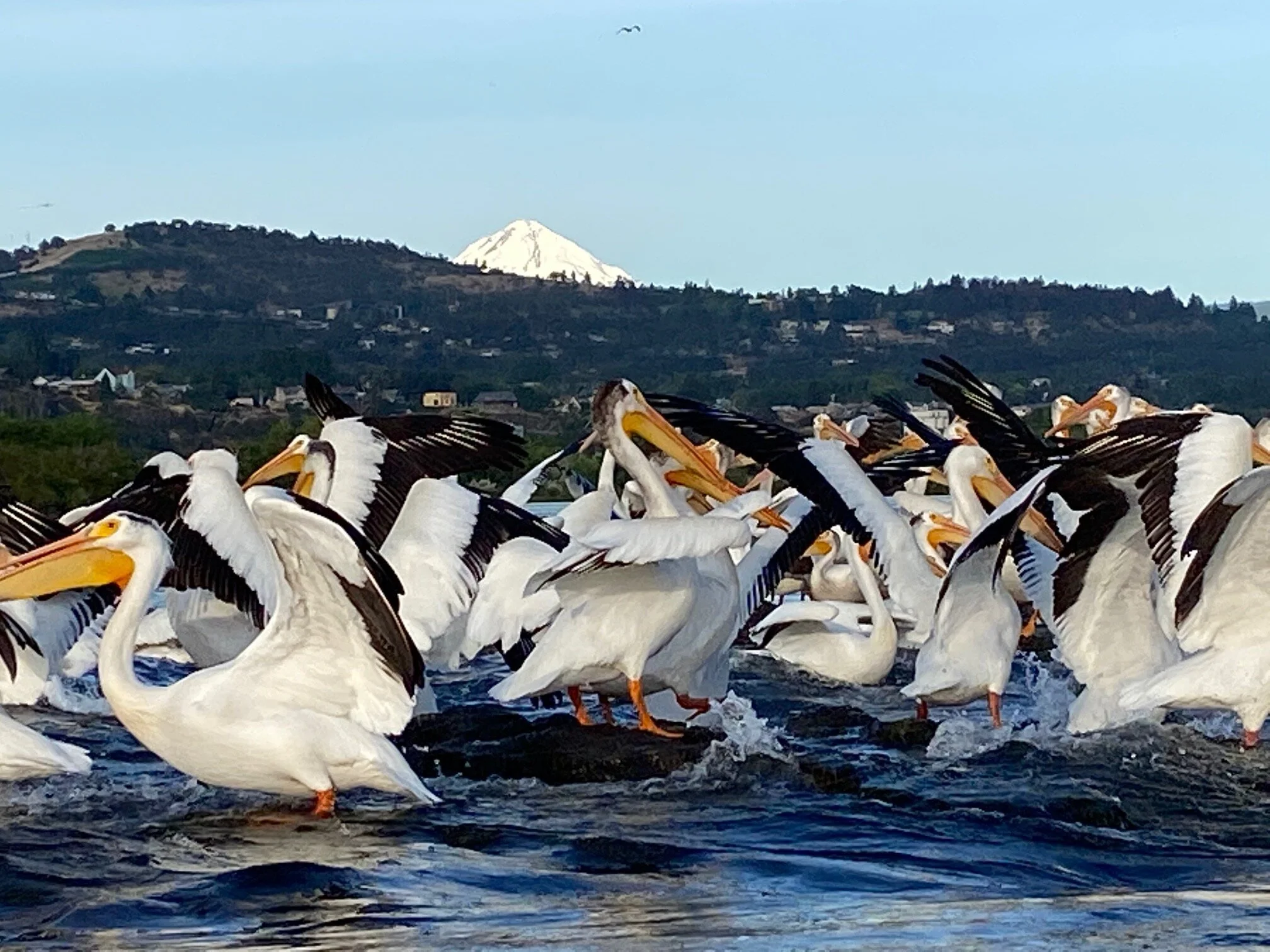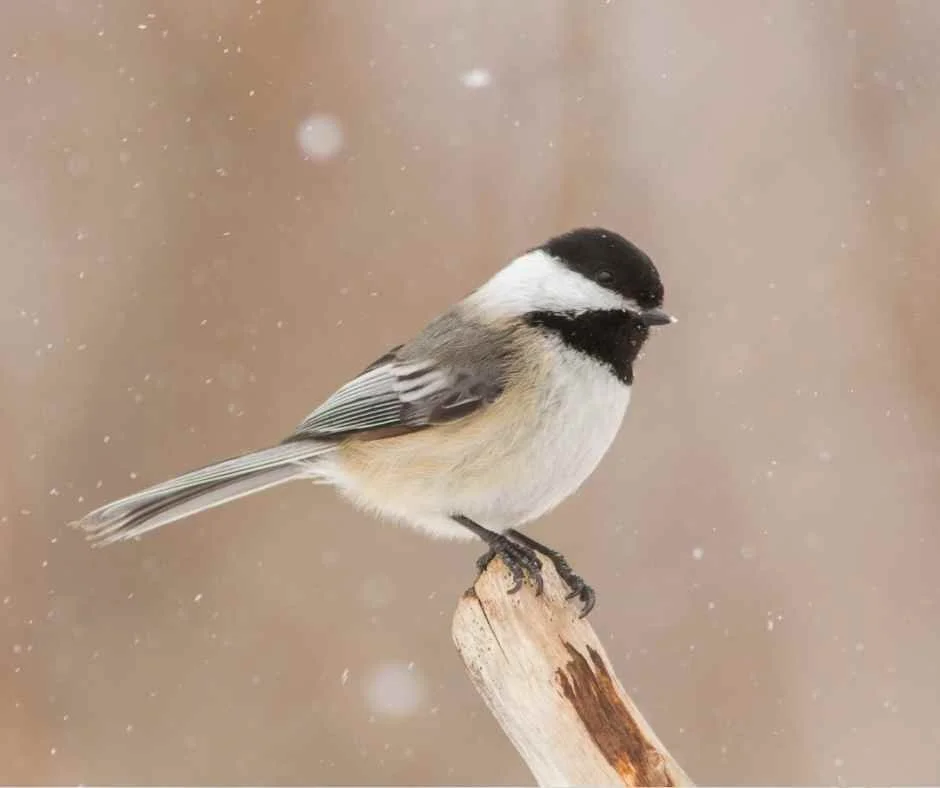Have you seen these birds at your winter feeders?
Support Birding News
Available to everyone. Funded by readers.
Column
By Cole Goodwin
The Dalles, Ore., January 18, 2024 – Have you seen these birds at your bird feeders? With winter storms having been in full force in the Columbia River Gorge these past weeks, even the shyest of birds are venturing out to people’s bird feeders in search of sustenance. So, unless you are a very experienced birder there’s a chance you may have seen some birds that you don’t recognize.
The list below is meant to help you identify some of the common birds you might see at your feeders this winter.
House Sparrow
Photo Credit: Oregon Department of Fish and Wildlife
These abundant backyard birds can be seen at most bird feeders year round in the Columbia Gorge. For a photo gallery, identification info and more about the life cycle of house sparrows click here.
Pine Siskin
Photo Credit: Oregon Department of Fish and Wildlife
These gregarious winter nomads range all over the gorge and they especially love thistle feeders. Here one day and gone the next, they like living life on the open road so to speak. For a photo gallery, identification info and more about the life cycle of birds click here.
Black Capped Chickadee
These super cute and curious little birds are bold enough to visit window feeders year round. For a photo gallery, identification info and more about the life cycle of birds click here.
Dark Eyed Junco
Photo Credit: Oregon Department of Fish and Wildlife
These small dark headed sparrows are year round visitors to most backyards in the Columbia River Gorge. For a photo gallery, identification info and more about the life cycle of birds click here.
White-Crowned Sparrow
Photo Credit: Oregon Department of Fish and Wildlife
These smart little birds flock to feeders in the winter. They love brushy borders and ground feeding on sunflower seeds. So be sure to sprinkle some seed on the ground for them! For a photo gallery, identification info and more about the life cycle of birds click here.
Golden-Crowned Sparrow
This large, handsome sparrow travels south to the Pacific Northwest from Alaska and Canada during the winter. These tundra and shrubland native birds are ground feeders. For a photo gallery, identification info and more about the life cycle of birds click here.
California/Western Scrub Jay
Photo Credit: Oregon Department of Fish and Wildlife
This intelligent bird can be a bit mischievous and can often be seen playfully dive bombing a house cat napping on a deck in summer. In winter they rely on hidden caches of acorns and other seeds they’ve collected to sustain them. Their strong beaks allow them to easily hammer open these tough seeds. However if you put out sunflower seed and peanuts- you still might get some to visit your feeders this winter. For a photo gallery, identification info and more about the life cycle of birds click here.
Varied Thrush
Photo Credit: Oregon Department of Fish and Wildlife
This shy bird is most often found happily eating bugs in the forests of the Pacific Northwest. However, when winter comes, these birds may venture into your backyard to forage for seeds and berries. They are ground feeders, so be sure to sprinkle some seed on the ground around your feeder if you want to attract these birds! However, don't be surprised if you see two male birds chasing one another off from your feeder because despite their shyness they can be quite territorial. For a photo gallery, identification info and more about the life cycle of birds click here.
Northern Flicker
This gentle eyed large woodpecker is notoriously shy and hard to attract to bird feeders. To attract this bird you will need to have seed on the ground for them as the ground is their preferred place to find food. After all, the Northern Flickers primary source of food is ants! They use their long barbed tongue to lap them up out of the dirt. More like lickers than flickers am I right? For a photo gallery, identification info and more about the life cycle of birds click here.
Spotted Towhee
Photo Credit: Oregon Department of Fish and Wildlife
This handsome bird loves to ground feed near brushy, shrubby and overgrown borders. They have a distinct backwards scratching hop that they use to uncover seeds and worms that might be hiding beneath the surface of the leaf litter and snow. For a photo gallery, identification info and more about the life cycle of birds click here.
Downy Woodpecker
Photo Credit: Oregon Department of Fish and Wildlife
This energetic little woodpecker is happy amongst a flock of chickadees and nuthatches at the bird feeders during the winter. Something of an acrobat, they prefer hanging suet feeders. For a photo gallery, identification info and more about the life cycle of birds click here.
Red-Winged Blackbird
Photo Credit: Oregon Department of Fish and Wildlife
This polygynous bird can be seen roosting in flocks all months of the year. In fact a flock of about thirty was seen hanging around outside the CCCNews office yesterday. This bird can live for up to fifteen years and loves to ground feed on mixed grains and seeds. For a photo gallery, identification info and more about the life cycle of birds click here.
Brewer’s Blackbird
Photo Credit: Oregon Department of Fish and Wildlife
These glossy yellow eyed birds are highly social, so you’re more likely to see a whole flock pass through than just one. They are ground feeders. For a photo gallery, identification info and more about the life cycle of birds click here.
European Starling
These extremely common song birds were brought over from Europe by Shakespeare enthusiasts during the nineteenth century. In the winter they are covered in white spots and in summer they turn dark and glossy. For a photo gallery, identification info and more about the life cycle of birds click here.
Steller’s Jay
Photo Credit: Oregon Department of Fish and Wildlife
This large jay loves to patrol the high canopy of evergreen forests and their loud harsh calls can be heard far and wide. Like most jays they are quite intelligent and excellent mimickers. Occasionally you can hear one mimicking other birds, squirrels, and even cats, dogs, and machinery. These mud nest building birds love suet feeders, peanuts, and other large nuts. For a photo gallery, identification info and more about the life cycle of birds click here.
Red-Breasted Nuthatch
Photo Credit: Oregon Department of Fish and Wildlife
This tiny little energetic ball of cuteness prefers to eat upside down. You can see them all summer scuttling up and down the trees and beneath branches looking for tasty insects to eat and tree resin to coat the outside of their nests. In the winter this feisty bird will happily hang upside down from hanging suet feeders. For a photo gallery, identification info and more about the life cycle of birds click here.
White-Breasted Nuthatch
Photo Credit: Oregon Department of Fish and Wildlife
These agile little birds love to whack nuts against trees with their sharp beaks to get to the tasty nut meat inside. They have very loud voices. You can attract them to your feeders with large nuts, sunflower seeds, peanuts and suet. For a photo gallery, identification info and more about the life cycle of birds click here.
Anna’s Hummingbird
Photo Credit: Oregon Department of Fish and Wildlife
These tiny hummingbirds are easy to invite to your backyard feeders. Simply put out a hummingbird feeder filled with hummingbird nectar. You can create your own nectar by mixing 1 part processed white sugar to 4 parts of water. Some easy hacks to keep your feeder warm during the winter include wrapping non-LED Christmas lights around your feeder and taping handwarmers to the base. Alternatively you can keep two feeders by keeping one inside and one outside and alternating them when the outside one freezes. Or if you only have one feeder, simply bring it in at night and then put it back out in the morning. For a photo gallery, identification info and more about the life cycle of birds click here.
Other birds that are around but that you probably won’t see at your birdfeeder:
Great Blue Heron
Bald Eagle
Red Tailed Hawk
Harlequin Ducks
Snow Geese


















